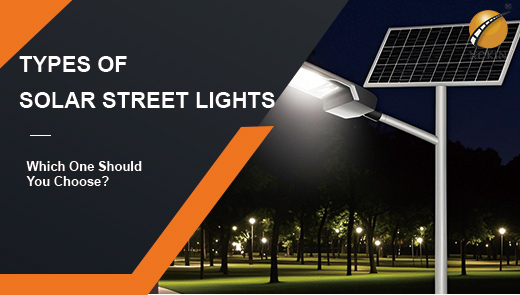Solar Street Lights: 6 Key Insights You Must Know for Smart Deployment
In today's society, with the increasing awareness of environmental protection and the pursuit of sustainable development, solar street lights, as a green and efficient lighting solution, are gradually being widely used around the world. Whether it's from the environmental perspective of reducing carbon footprint, or from the diversified application scenarios, or from the many factors that need to be considered when purchasing, an in-depth understanding of solar street lights is particularly important. Next, let's explore 6 key aspects of solar street light usage and deployment.
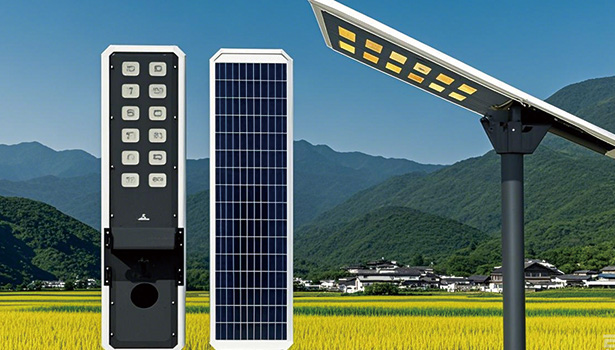
Reducing Carbon Footprint with Solar Street lights
What is a carbon footprint?
Carbon footprint is an important indicator of our impact on the environment. It calculates the total amount of greenhouse gases released into the atmosphere as a result of human activity, with carbon dioxide (CO₂) dominating. These emissions originate from a number of sources:
Transportation:
The operation of cars, planes, trains and other means of transportation that we use every day generates carbon emissions.
Energy consumption:
Homes and businesses use energy sources such as electricity and heating, the production of which is often accompanied by carbon emissions.
Food choices:
The structure of our diet, especially meat consumption, has a significant impact on our carbon footprint.
Waste generation:
The garbage we throw away, especially non-biodegradable items, also adds to carbon emissions.
In the construction of urban infrastructure, every detail has a significant impact on the carbon footprint, and the role of streetlights as an important part of urban lighting should not be underestimated.
How do solar streetlights reduce carbon emissions?
Solar streetlights convert solar energy into electricity through solar panels to fulfill the lighting function, a process that does not rely on traditional fossil fuels to generate electricity. Compared with traditional streetlights, solar streetlights can significantly reduce the emission of greenhouse gases such as carbon dioxide. Relevant research data show that the use of solar streetlights can significantly reduce carbon emissions throughout the life cycle of the streetlight, which is important for mitigating global climate change and realizing local environmental protection goals.
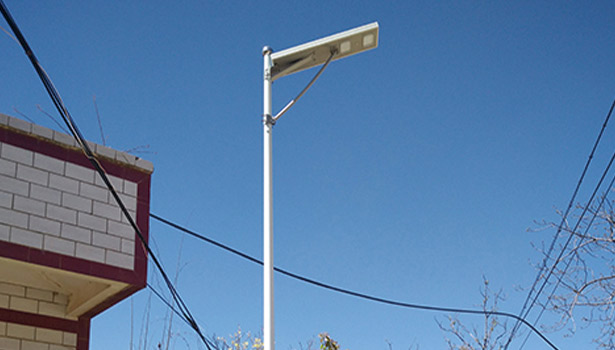
Solar Street Lights Main Types
Standard solar street light
A standard solar street light consists of several components such as solar panels, batteries, semiconductor LED lights and controllers. The solar panel is responsible for absorbing solar energy and converting it into electricity; the battery is used to store electricity to power the street light at night or when there is insufficient light; the LED light is used as a light source to provide illumination; and the controller connects the various components to ensure the stable operation of the system.
This type of street light has some significant advantages. For example, the capacity of solar panels and batteries can be customized according to actual needs, which can meet the power requirements of different projects. At the same time, it can be equipped with higher power to accommodate the lighting needs of large projects. In addition, the solar panels can be installed in an adjustable direction to better receive sunlight.
However, there are some drawbacks to standard solar street lights. They are relatively expensive and the installation process is more complicated, involving the connection and commissioning of multiple components and cumbersome wiring connections.
Integrated solar street light
Integrated solar street lights integrate solar panels, controllers, batteries, LED light sources and other components into a single housing. Due to the limitation of lamp shell size, its power is usually small, generally in 80W and below. However, if the cost factor is not considered, the appropriate expansion of the shell and panel size, the power can be increased to 120W.
The advantages of integrated solar street light are very outstanding. It is easy to install and can be widely used in city roads, country roads, squares, parks, villa areas and other places. At the same time, its transportation is also more convenient.
However, it also has shortcomings, such as the relatively small capacity of solar panels, which may not be able to fully meet the lighting needs in areas with insufficient sunlight. The battery capacity is also relatively limited, which is less suitable for areas with a high number of consecutive cloudy and rainy days. Moreover, the installation direction of the solar panel is more demanding.
2-in-1 Solar street light
Two-in-one solar street light is between traditional standard solar street light and integrated solar street light. As you can see from the name, it is mainly composed of two parts. According to the placement of the battery, it can be divided into two types: one is a combination of battery, solar panel and controller, with the LED light as a separate part; the other is a combination of battery, LED light source and controller, with the solar panel as a separate part.
This design combines some of the advantages of integrated and traditional solar street lights, such as relatively easy installation, adjustable solar panels, customizable battery and panel capacity, and a wide range of applications.
Hybrid solar street light
Hybrid solar street light is an important category in solar street light. There are two common types: one is a combination of solar and wind energy, through solar panels and wind turbines together to provide energy for the street light. When there is enough sunlight, the solar panel converts solar energy into electricity and stores it; when there is more wind, the wind generator can supplement electricity for the street light. The other is to combine solar energy with urban power grid, when solar energy is insufficient, it can automatically switch to urban power grid power supply to ensure the continuity of road lighting.
The advantage of hybrid solar street light is that it overcomes the limitation of solar street light which is greatly affected by weather, but there are some disadvantages, such as complicated line connection and high cost.
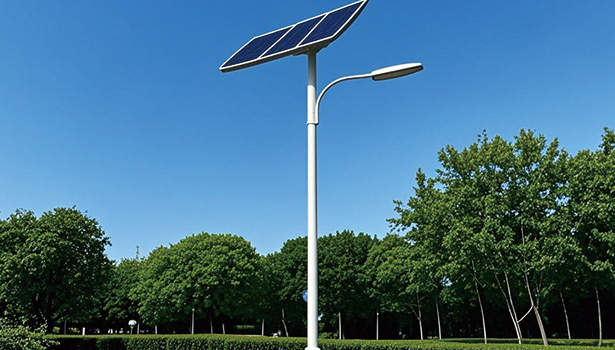
Main Application of Solar LED Lighting
Street lighting
In municipal construction, solar street lights have obvious advantages in street lighting. Compared with the traditional installation of grid-connected street lights, the installation process of solar street lights is easier. The assembly and installation of a single solar street light can usually be completed within two hours, without the need to close the road or carry out large-scale construction, and will not cause damage to the community environment.
Parking lot lighting
For businesses, sometimes a quick solution to a lighting problem is needed. Solar lighting is an ideal option when it comes to parking lot lighting because the average time to install solar streetlights is shorter (especially if there is an existing pole foundation), taking about two business days. Solar street lights not only protect the pavement of parking lots, but also keep commuters safe at night.
Parks and park beautification lighting
The installation of park lighting has always presented some challenges. On the one hand, installing traditional lighting requires digging up the ground to access the power grid, which can damage the park's landscaping achievements; on the other hand, during the installation process, certain areas need to be closed to the public, causing inconvenience to visitors. Solar lighting solves these problems. After the pole foundation is installed and stabilized, the installation of solar street lights can usually be completed within one day.
Portable lighting for construction sites
Solar street lights are characterized by fast and convenient installation. At construction sites, solar street lights can be placed directly at the construction site for charging, eliminating the need for generators that are noisy, smell bad and require frequent refueling. It can also be carried to the next construction site for further use after the project is completed.
Airport lighting
At airports, additional lighting is sometimes required to ensure that passengers can travel safely from one location to another at night. For example, airplanes occasionally unload passengers at night in areas that are not connected to a boarding bridge, and this is where solar lighting plays an important role. Movable solar beacons or portable lamps can be transported to airport tarmacs to light the way to the terminal for the safety of passengers.
Military lighting
Military operations have special requirements for lighting systems, and traditional grid-connected lighting solutions often have complex wiring, long installation times, and high costs. Solar lighting avoids these problems and provides a clean, fast alternative to military lighting.
Security lighting for priority areas
When solar streetlights are used in conjunction with motion detectors, they can effectively prevent theft, increase security, and provide lighting as needed. During the day, the solar panels charge the batteries, and at night the batteries power the lamps. This type of lighting is commonly used in open fields in rural areas and can also be installed in commercial and residential areas to prevent vandalism, providing effective security in these areas.
Solar retrofit lighting
If an existing streetlight pole or pedestal is still usable, but the fixture is damaged, then solar lighting can be installed through retrofit. This approach eliminates the need for large-scale construction and makes the installation process easier and faster, provided that the streetlight pole is structurally capable of meeting the requirements for subsequent use. Through this retrofit method, the lighting system can be updated and upgraded while saving costs.
Solar signage lighting
For businesses, solar lighting provides a cost-effective way to illuminate signage. Often, powering billboard lighting can be problematic because billboards are often located near roadsides, grassy areas, or sidewalks, and digging up the ground to lay wires can be costly. With solar lighting, businesses don't have to worry about permits or over-digging up the ground to ensure that their signage is clearly visible at night, boosting their business' promotional efforts.
Solar awnings / mailboxes / bus stop lighting
Solar lighting is also a great option for lighting projects in small areas such as awnings, mailboxes and bus stops. These projects usually require the use of fewer fixtures and the lighting system can be customized to fit the surroundings of the project area.

Buying Solar Street Lights: The Important Things to Look Out For
Solar panel
Solar street lights rely on solar panels to generate electricity. There are mainly the following types of solar panels on the market today:
Monocrystalline silicon solar panels
Monocrystalline silicon cells are used, with high conversion efficiency, up to 23%. Excellent performance under strong light, but relatively high cost. Smaller size for the same power, better wind resistance and tolerance to other environmental factors.
Multi-crystalline silicon solar panels
The production process is relatively simple and the cost is low, but their conversion efficiency is slightly lower than mono-crystalline silicon panels, generally between 18% - 20%. The performance is better under weaker light conditions such as cloudy and rainy days. However, their size is larger than monocrystalline panels for the same power.
Amorphous silicon solar panels
Lower conversion efficiency, larger size, less used in the field of solar street lights.
When choosing solar panels, the decision cannot be based solely on their performance and cost on cloudy days. Factors such as the average weather data throughout the year and the wind resistance level of the project site need to be considered. For road and municipal projects, monocrystalline solar panels are usually recommended due to the high requirements for stability and wind resistance. In wholesale and retail markets, polycrystalline solar panels are a more cost-effective option for solar lights with lower power requirements.
LED luminous efficiency
In engineering projects, commonly used lamp bead models such as 3030 and 5050 have high luminous efficacy of up to 240LM/W, significant energy savings, and a service life of 70,000 - 100,000 hours, but at a relatively high price.
If you are purchasing solar street lights for road projects, it is recommended to choose LED chips with high luminous efficiency and long service life to ensure the lighting effect and long-term stability.
Street light color temperature
The color temperature of the solar LED street light is also an important consideration, and different installation environments have different requirements for color temperature. For example, when installing solar street lights in residential areas, you need to consider the impact of color temperature on wildlife and residents' lives. Higher color temperatures may seriously affect the sleep of small animals and disturb human sleep patterns.
In areas with poor air quality or foggy conditions, color temperature penetration needs to be a key consideration to improve driving safety.
LED light power
It is common to see solar powered LED street lights labeled as 100W, 200W, 300W or even 1000W on the market. But in fact, these power labels are often exaggerated, mainly for the low-end market, to cater to consumer preference for high-power lamps.
Therefore, when choosing solar LED street lights for a project, it is recommended to focus on the lumen value rather than power. The lumen value more accurately reflects the actual brightness of the lamps.
Battery system and safety
Early solar street lights use lead-acid or colloidal batteries, these batteries have a large capacity, but the depth of discharge is low, the size is large, heavy, and easy to be stolen, has been gradually eliminated from the market. Today, lithium batteries are more widely used. However, due to the fierce competition in the market, there are many types of lithium batteries, commonly 3.2V, 11.1V, 12.6V, 12.8V, 25.6V and other different systems.
Overall, Li-ion ternary batteries have higher risk in high temperature environment, but better performance in low temperature environment; Li-FePO4 batteries have excellent high temperature performance, higher stability and safety. Therefore, in solar street light projects, 12.8V lithium iron phosphate batteries are generally recommended to ensure product quality and safety.
Street light operating hours
Restricted by cost and installation space, the current solar powered street light is not yet comparable to grid-connected street light in terms of brightness and lighting hours. In order to save energy and reduce the demand for battery capacity and solar panel power, solar streetlights usually adopt segmented dimming mode. The brightness is automatically reduced at midnight when pedestrians are scarce.
When purchasing solar LED street lights, if there is a specific lighting hour requirement, you should communicate with the supplier in time to ensure that the streetlights can meet the project requirements.
Light pole
The quality of the light pole has an important impact on the service life of the solar street light. The use of unqualified light poles may lead to rust, breakage and other safety hazards. Currently, the mainstream light pole material is galvanized or hot dip galvanized material.
Galvanized light poles:
Lower cost and relatively simple manufacturing process. However, if the rust prevention treatment of the welding point is not proper, it is easy to rust.
Hot-dip galvanized light poles:
Higher cost, complex manufacturing process, treated with multiple anti-rust and anti-corrosion processes, more suitable for government projects and other projects with high quality requirements.
Warranty
As an electronic product, solar street light may fail during use. Generally speaking, the warranty period of solar street light with guaranteed quality is 3 years, and some of them can provide 5 years warranty. When purchasing, consumers should look at the warranty promise rationally and do not believe in the over-exaggerated 10-year warranty publicity.
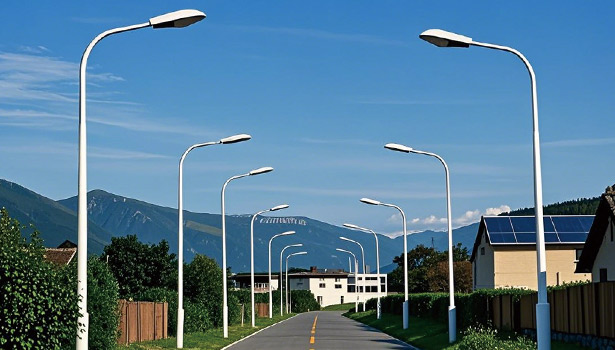
Practical Tips for Buying Solar Street Lights
Choose according to the type of user
Individual users:
If you are an individual user, you do not necessarily have to choose a brand new solar street light with all components included. You can consider replacing the existing lamps with integrated lamps with integrated solar panels and batteries, which can meet the lighting needs and is relatively affordable.
Commercial users:
For commercial users or businesses, ease of installation is critical. When purchasing multiple sets of solar powered LED street lights, products that are difficult to install can cause numerous problems and increase installation costs and time.
Industrial and government users:
Industrial users and government projects can be more complex when purchasing solar LED street lights. These projects often require customized application solutions, so professional organizations are needed to evaluate the use and deployment of this technology in different fields and application scenarios.
Review manufacturer and product qualifications
When purchasing solar street lights, be sure to review the street light manufacturer's qualifications, including product certifications, past experience with similar projects, and the general terms and conditions they offer. A reputable manufacturer usually has well-established credentials and a good reputation for past projects.
Focus on battery characteristics
The battery in a solar LED street light is the key component for storing solar energy. Batteries should not only be durable but also easy to replace. Therefore, when choosing a product, you should pay attention to whether the battery has these characteristics, and its technical parameters should comply with industry standards, so that you can easily find alternatives in the market. As solar powered street lights are mostly installed outdoors and are exposed to various extreme weather conditions, the durability, moisture and heat resistance of the batteries are also factors to focus on.
Understanding the principles of solar panels
Solar panels are responsible for capturing sunlight and converting it into electricity. In some solar street lights, solar panels are grouped together in a single unit along with the light source, batteries, and controller, while in other products, they are mounted outside the pole in a separate array.
Ensure the quality of the pole
The pole on which the solar LED street light is mounted must be sturdy and able to withstand the weight of the street light. At the same time, the pole should be designed to ensure that it can remain upright in adverse weather conditions, such as typhoons, to provide stable support for the streetlight.
Consider light intensity and coverage
When purchasing solar powered outdoor street lights, you also need to consider the light intensity and coverage area. Even if the street light itself is of good quality, it will not be able to achieve a good lighting effect if the light intensity is insufficient or the coverage area is unreasonable. Therefore, when choosing a product, the light parameters of the street light should be reasonably selected according to the actual installation environment and demand.
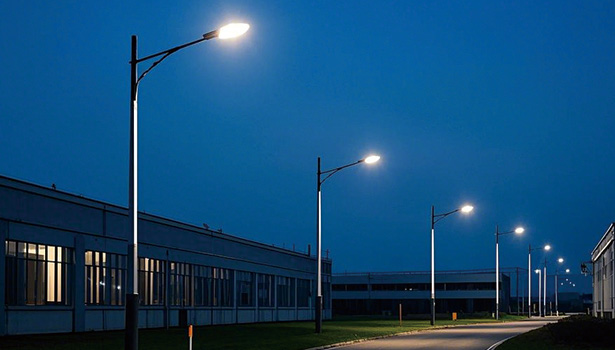
Is Solar Street Light Worth Investing?
Long-term financial savings
Although the initial purchase cost of a solar street light may be higher than that of a traditional street light, it can bring significant savings in electricity and maintenance costs in the long run. While traditional street lights rely on grid power and incur significant monthly electricity bills, solar street lights utilize free solar energy and have virtually no electricity bills. In terms of maintenance, traditional street light is prone to line aging, short circuit and other faults due to complex lines, with high maintenance cost; solar street light structure is relatively simple, and the main maintenance work focuses on solar panel cleaning and regular battery inspection, with low maintenance cost.
According to the actual case statistics, in the 20 - 25 years life cycle of solar street light system, the savings in electricity and maintenance costs often far exceed the initial investment, and can realize a good return on investment (ROI).
Environmental responsibility and compliance
With the increasing global emphasis on environmental protection, countries have introduced strict carbon emission regulations and sustainable development policies. Investing in solar streetlights can effectively reduce carbon emissions and help companies and municipalities meet environmental regulations. This not only reflects the responsibility for environmental responsibility, but also helps to enhance the social image of enterprises and governments, and enhance public recognition and trust.
In the context of environmental protection, the active adoption of sustainable lighting solutions can have a positive impact on social opinion and public perception, and promote good interaction with the community.
Enhancing public safety and community well-being
Reliable street lighting is an important factor in ensuring public safety. Solar streetlights can provide stable and continuous lighting, improving visibility on the road at night and reducing the probability of traffic accidents. At the same time, a good lighting environment has a deterrent effect on criminal behavior, helping to reduce crime rates and safeguard residents' personal and property safety.
Although the upfront investment in solar street lights is relatively high, their value in enhancing public safety and community well-being is inestimable from a social perspective. For example, after installing sustainable solar street lights in some communities, residents' sense of security has been significantly enhanced, community activity has increased, and the quality of life has been significantly improved.
In summary, solar street lights are a worthwhile investment in lighting solutions because they offer tremendous advantages in terms of long-term finances, environmental responsibility, and public safety, among other dimensions. Both city planners, business managers and individuals concerned with environmental protection and quality of life should give full consideration to the use of solar street lights in lighting projects.


